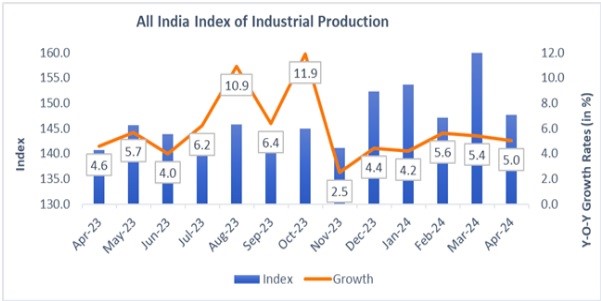13 June 2024 : PIB Summary For UPSC
1. First Session of 18th Lok Sabha to be Held from 24th June to 3rd July, 2024
| Topic: GS2 – Indian Polity |
| Context |
| The upcoming sessions of the 18th Lok Sabha and 264th Rajya Sabha mark the start of a new parliamentary term, with key proceedings including member oaths, the Speaker’s election, and the President’s address. |
Analysis of the news:
- The first session of the 18th Lok Sabha is scheduled from June 24 to July 3, 2024.
- Newly elected Lok Sabha members will take their oaths/affirmations during this session.
- The session includes the election of the Speaker and an address by the Hon’ble President of India, followed by a discussion.
- Union Minister of Parliamentary Affairs, Shri Kiran Rijiju, shared this information on social media platform ‘X’ (formerly Twitter).
- The 264th session of the Rajya Sabha will start on June 27, 2024, and end on July 3, 2024.
| More about parliamentary sessions in India: |
|
| Practice Question: Discuss the significance of the first session of a newly elected Lok Sabha in the context of Indian parliamentary democracy. (150 Words /10 marks) |
(Source – https://pib.gov.in/PressReleseDetail.aspx?PRID=2024630 )
2. INDIA’S IIP RECORDS A GROWTH OF 5.0% IN THE FIRST MONTH OF THE FINANCIAL YEAR 2024-25
| Topic: GS3 – Indian Economy |
| Context |
|
Analysis of the news:
- The Quick Estimates of the Index of Industrial Production (IIP) for April 2024 stand at 147.7, a rise from 140.7 in April 2023.
- Sector-wise indices for April 2024: Mining 130.8, Manufacturing 144.2, and Electricity 212.0.
- Use-based classification indices for April 2024: Primary Goods 152.2, Capital Goods 95.3, Intermediate Goods 156.9, Infrastructure/Construction Goods 183.3, Consumer Durables 118.7, and Consumer Non-durables 151.0.
- The overall IIP growth rate for April 2024 is 5.0%, compared to 4.6% in April 2023.
- Sectoral growth rates: Mining 6.7%, Manufacturing 3.9%, Electricity 10.2%.
- Top manufacturing contributors: Basic metals (8.1%), Coke and refined petroleum products (4.9%), Motor vehicles, trailers, and semi-trailers (11.4%).
- Use-based growth rates: Primary Goods 7.0%, Capital Goods 3.1%, Intermediate Goods 3.2%, Infrastructure/Construction Goods 8.0%, Consumer Durables 9.8%, Consumer Non-durables -2.4%.

| Index of Industrial Production (IIP) |
|
(Source – https://pib.gov.in/PressReleseDetail.aspx?PRID=2024748 )





